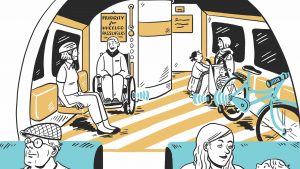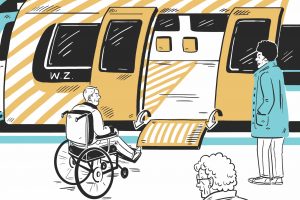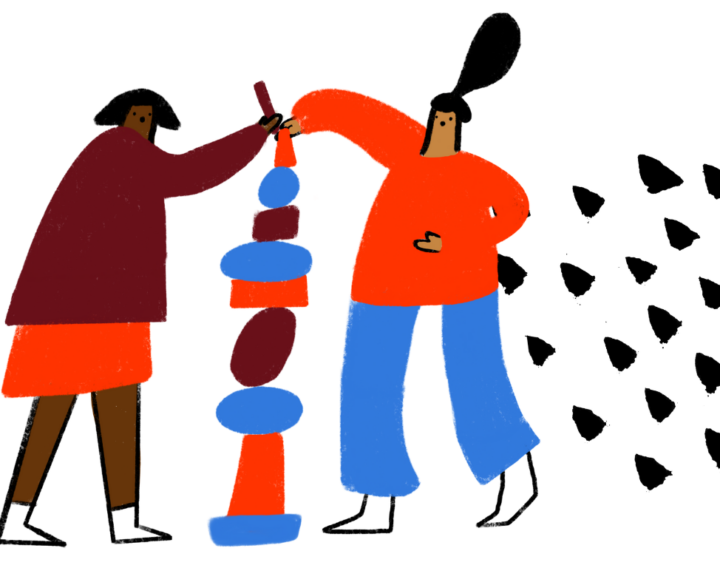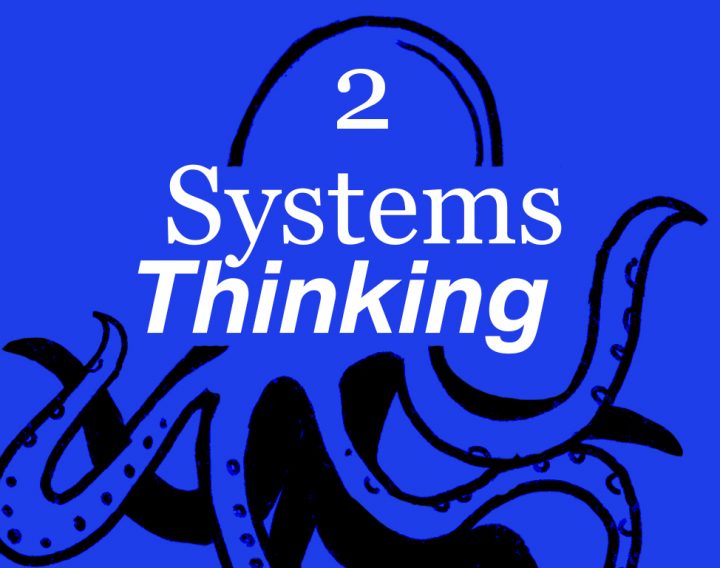


In the UK, the number of people travelling on trains has doubled in the past 20 years. At the same time, the popularity of cycling has increased. More people want to travel by train and bike, but our existing systems, services and infrastructure haven’t been designed with this in mind.
Reimagining futures
London Midlands Lab (LML) knew this problem all too well. This increase was proving to be stressful, not just for cyclists but for other passengers and staff as well. Current bicycle provision was causing conflict between passengers, operational complications for frontline staff and delays to trains. To help tackle these challenges, in 2018 LML hired Snook to reimagine the future of bikes on trains.
“Like the railway, cycling has been through a renaissance … we’re carrying double the amount of passengers that we did 10 years ago. More of those passengers are now travelling with bikes, and we want to find a way to harmonise that.”
Unpicking the cyclist’s journey
By travelling up and down the network, observing and speaking to passengers and staff, we started to identify some key service challenges. We learnt that the experience and the environment could be stressful for all passengers: a lack of signage relating to bikes, a fear of not knowing what to do for inexperienced travellers, and anxiety about leaving bikes securely at the station.
For both passengers and staff, there was also a lack of clarity around the company’s policy for bikes; neither party was sure as the information was inaccessible and the rules from network to network were inconsistent. Furthermore, due to London Midlands “walk up and go policy” there was no available data as to how many cyclists were on the network, making it difficult to transform the service in response to the increasing demand.
By working closely with cyclists, non-cyclists, frontline staff and senior management, we ran a CyleHack event where people could deconstruct and design solutions to the key challenges we had identified in the research. The best ideas were brought forward into a design sprint and then turned into a playbook for potential future development.
Impact
The resulting playbook outlined 24 changes that could transform the service – for everyone. By removing obstacles in train carriages, physical space could be made more accessible for all wheel passengers, reducing conflict. Implementing clearer signage throughout stations and on trains would make the experience smoother for staff and prevent train delays. Furthermore, by collecting data through a centralised booking app that showed real-time bike space availability as well as the company’s rules, LML could prevent complications, relieve anxiety, and improve visibility for passengers and staff.
If implemented, these selected concepts, and the others outlined in the playbook, have the potential to improve the end-to-end passenger experience, making it easier for everybody to have a more active, sustainable travel experience.





